Are You a Cannibal (Voter)? And Too Exuberant?
As of Wednesday, nearly 58 million Americans had voted early. What does that mean, and what's happening in the legal trenches? Finally, a word of caution to Republicans.
It’s hard to make heads or tails from early voting. In recent years, Democrats and women have preferred it, while Republicans like traditional election “day” voting.
There’s no better example than Pennsylvania during the pandemic-wreaked year of 2020 when I was a poll watcher in my local Edgmont 1 precinct (Delaware County). Trump won on election day with 60 percent but narrowly lost the traditional GOP precinct after the mail votes were finally counted overnight.
When I went to bed on election night, Trump led statewide by over 600,000 votes. I woke up to discover that lead had evaporated. He eventually lost over 70 percent of the mail voting and the state by 80,000 votes. That story was played out elsewhere, as Trump criticized mail balloting and encouraged his voters to show up in person.
Side note: Republicans won two of four statewide races on the ballot in 2020, including State Treasurer and State Auditor. They narrowly missed defeating then-incumbent Attorney General Josh Shapiro, who is now governor and was almost Kamala Harris’s running mate. Had Republicans not successful removed a straight party voting option on ballots under the controversial pandemic-year Act 77 election reform law, it could have been worse.
And had Kamala Harris chosen the talented Shapiro as her running mate, Trump and Republicans might be less enthusiastic about the election. Talk about dodging a bullet. So to speak.
Trump’s advice not to vote early turned out to be a disaster for Republicans, and they’ve learned their lessons. Trump announced he would vote early in person and now encourages his voters to do the same.
And they are. GOP early voting is way up and even eclipsing Democrats historically in some places. The best example is Nevada, where GOP early voters lead Democrats by 42,000 as of October 30. GOP early voters also lead in North Carolina. Republican applications for mail votes exceeded those of Democrats this week as overall early voting is way down in the Keystone State, about 1.5 million. That compares to 7 million such ballots being cast in 2020. Only a fifth of early votes have been cast thus far, compared to the total from 2020. That’s a lot of ground to cover, but anything postmarked (even if not) by election day (November 5th) will be counted. . . eventually.
But there are limits to reading anything into the early votes. We don’t know how they were cast, for one. Second, many of those votes are likely cannibalized from regular election-day voters. Mail voting, in general, has been down since 2020, while early voting in person appears to be up. With a week to go, it seems early voting has already eclipsed the 35 million such votes four years ago. Just over 100,000 early votes were cast, including mail ballots, in 2020. Early voting is just not a good predictor.
“Looking at the 51 million-plus votes that thus far have been cast, it is clear that Republicans are voting early in much larger numbers than they have in previous cycles,” wrote the Wall Street Journal’s political editor, Ben Pershing. “But there is a question about whether they are simply cannibalizing their Election Day vote or whether these voters are newbies who wouldn’t have cast ballots otherwise, boosting Donald Trump.”
Where, geographically, are those early votes coming from? Suburban areas? Urban centers? Rural voters? It matters - urban and most suburbs might favor Democrats, while most rural voters are solidly Republican. They’re coming from everywhere, with suburban areas at slightly higher levels, with voters over 50 (and especially over 65) leading the way.
Let’s take Virginia, for example. In 2020, my congressional district, Virginia’s 10th, a Democratic-leaning, mostly suburban area, led the state in early voting. This time, they trail the heavily Republican and more rural First District. But there doesn’t seem to be a considerable difference between Democratic and Republican congressional districts. We don’t register by party in Virginia (neither does Georgia and a few other states).
In 2020, Democrats cast over 44 percent of early ballots, compared to 30 percent of Republicans and 24 percent who were unaffiliated or from states that don’t register by party. That difference has narrowed nationally this year, with 39 percent of registered Democrats voting early thus far, compared to 36 percent of registered Republicans.
What’s the bottom line? Heck if I know, but mixed with other data, including new voter registrations, it could signal higher GOP voter intensity, an advantage with new registrations, and turnout fueled by organizational strength and better messaging from four years ago. GOP voter registration deficits have narrowed in states like Pennsylvania, including eclipsing Democratic registrations in Bucks County, a crucial swing county and GOP congressional district (Rep. Brian Fitzpatrick, R-PA) in the Philly suburbs.
If you’re a Republican, feeling cautiously optimistic about early voting is okay, but don’t get carried away. Early voting is not necessarily an indicator how a state may ultimately vote.
The Legal Fights
The Democrats’ leading election litigator, Marc Elias - who has been sanctioned by the Fifth District US Court of Appeals for unethical lawyering - runs the Democracy Docket website. It’s the only one I’m aware of that tracks election-related lawsuits and court actions despite its clear Democratic bias. It says 265 lawsuits have been filed, including 71 by Republicans. A few are worth watching; the courts, including the Supreme Court, have made important rulings.
Today, the Supreme Court stayed two lower court rulings that sought to allow non-citizens to remain on Virginia’s election roll. They’ll now decide the case, but Virginia can now proceed to remove self-identified non-citizens from being eligible to vote. Republicans are ecstatic despite the small number of voters in question. The US Department of Justice fought vigorously to prevent Virginia from removing them over a regulation that requires a 90-day “pause” before an election to clean up voter roles systematically. But it wasn’t “systematic.”
In addition, that “pause” regulation only dealt with voters who were previously eligible to vote, according to Hans von Spakovsky, a former Republican member (and chair) of the Federal Election Commission. Non-citizens were never eligible to register to vote.
The Department of Justice’s rigorous advocacy to keep non-citizens on the rolls is troubling, but tragically, that’s become par for the course. Merrick Garland should be judged by history as the nation’s worst Attorney General, winning the trophy from John Mitchell, who tried but failed to weaponize the Department of Justice. Garland has proven wildly successful.
In Pennsylvania, a court extended “early voting” (“vote by mail” in person—weird, I know) for Bucks County early voters. It seems that last Friday—the last day to vote this way—a long line of voters was told to go home at 5 p.m., disenfranchising them. That’s been rectified, and Republicans are happy.
Republicans are less happy about a state Supreme Court ruling that Robert F. Kennedy Jr., who has suspended his campaign and endorsed Trump, from being removed from ballots in Wisconsin and Michigan because he made the request too late. Any votes cast for Kennedy in those states might have gone to Trump, but who knows?
The Court is also expected to act soon on another Pennsylvania case involving Butler County - where Trump’s first assassination attempt occurred. Can people whose mail ballots were rejected still vote “provisionally” on election day? Republicans say no, citing state law that a ballot submitted is a vote, and you can only vote once, even if it was rejected because you violated procedures. Democrats say yes. Democrats are likely to win.
An interesting case involves my old stomping ground in Philly’s four “collar” counties, challenging the eligibility of voters who filed change-of-address forms with the US Postal Service before last April’s primary elections. Over 865 such challenges, at $10 per challenge, have been filed, including over 500 Democrats. Some election officials claim the USPS’s change-of-address system is unsuitable for challenging voter registrations. We’ll see.
Those are just the more recent cases, and others will no doubt be decided and filed after the election. I have my eye on a suit filed Tuesday by the 1789 Foundation against Pennsylvania’s Secretary of State for failing to update voter registration files as required by the National Voter Registration Act (Motor Voter law) of 1993. Many have known for years the poor condition of the Commonwealth’s voter rolls and plenty of stories about dead voters and worse.
Speaking of bad voter rolls, this gem popped up in Lancaster and possibly York Counties in Pennsylvania. The Lancaster District Attorney is investigating 2,500 possibly fraudulent voter registrations. We know little at this time, but some lefty media outlets claim, without evidence, that Trump will use this to challenge the Commonwealth’s election results. How about focusing on the facts?
Speaking of Marc Elias. If you’re looking for an “election denier,” I’ve found one for you.
Word of Caution to Republicans
Republicans are supposed to have elephant-like memories, but not this election. It only was two years ago when Republicans were salivating at a “red wave” in mid-term elections that never materialized. A decade earlier, many of us (me included) predicted a Mitt Romney win over Barack Obama. Romney’s crowd sizes - over 30,000 in a Philly suburb just before election day - was an indication of enthusiasm. Where have we heard that before? It was also on the heels of a wildly successful mid-term election in 2010 when the GOP captured control of Congress.

My wife and I knocked on over 200 doors in Lancaster County, Pennsylvania, for Romney as part of their “ORCA” turnout program, which failed miserably. Obama comfortably won Pennsylvania, the national popular vote, and the electoral college. Obama’s campaign was cutting-edge, using smartphone technology to connect and mobilize younger and minority voters.
Then, pundits criticized polls that showed Obama leading in some places due to sample bias. Those polls turned out to be more right than wrong.
It’s true that pollsters have missed - undercounted - Trump’s support in both elections where he’s been on the ballot, sometimes famously. But have pollsters made adjustments? From Newsweek:
Berwood A. Yost, director of the Center for Opinion Research at Franklin & Marshall College, explained that modern polling now involves a blend of online, text, and other techniques to reach a broader audience, with methodology tweaked to reflect changing communication norms.
"Pollsters have adapted over the past eight years, moving away from phone surveys and incorporating text messaging, mail, and online surveys to reach those who might otherwise avoid polls. But it's still experimental—these adjustments aim to better capture voices that might otherwise go unheard."
Over the past two decades, the rise of cellphones, text messaging and online platforms has transformed survey research. Traditional methods, like live-operator phone polls, are nearly obsolete, with fewer than a quarter of Americans still using landlines, according to CDC data.
We really don’t know if pollsters have genuinely adjusted to fix their perpetual under-count of Trump voters, many of whom do not trust or talk to pollsters. Still, polls are all over the map. Rasmussen Reports’ latest, relying heavily on automated phone polling, has Trump ahead nationally by two points, within the “margin of error.” Other polls have Harris ahead just as much.
Pollsters got it right about the “red mirage” in 2022. But Trump wasn’t on the ballot. Just like Democrats and I got it wrong in 2016 when we thought Hillary Clinton, thanks to the “October Surprise” of the Access Hollywood tape of a decade previous with Donald Trump and Billy Bush, was headed to a sure victory. We weren’t the only ones.

This is a very, very close election. Republican exuberance is unjustified. It shouldn’t be close, frankly, given the vacuousness and horrible campaign of Kamala Harris, but lots of people hate Donald Trump that much, and around eight percent of self-identified GOP voters won’t vote for him. While the trend lines suggest tailwinds for Donald Trump - things are generally moving in the right direction, and other factors suggest momentum is clearly on his side - this election is very close. I’m hearing criticism of polls showing Harris ahead nationally and in several target states that sounds an awful lot like Dick Morris in 2012, predicting a Romney landslide.
This, from Daniel McCarthy of Spectator World, should be read soberly.
Trump’s lead in polls of the most critical battleground states is typically within the margin of error. The message these surveys are sending is that the race is a virtual tie, yet eager Trump fans on social media are treating a 0.6 percent lead — his current margin in Pennsylvania, the biggest prize on the electoral map — as if it were 6 percent. Trump won Pennsylvania by 0.72 percent in 2016 and lost it by 1.17 points in 2020. It could easily go either way this year.
Republicans can take whatever encouragement they want from their favorite pollsters and pundit predictions, but this is a polarized, deeply divided electorate; Kamala Harris and the Democrats have badly outspent Republicans, and the proof will be in the pudding a few days if not weeks after election day.
Check your exuberance, Republicans. Get busy. While you still can.




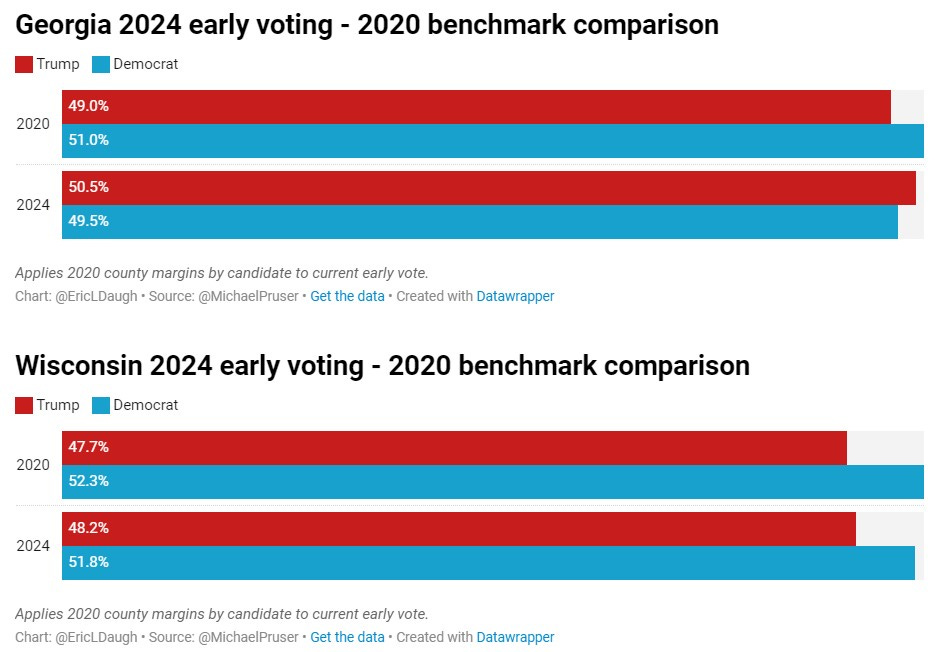
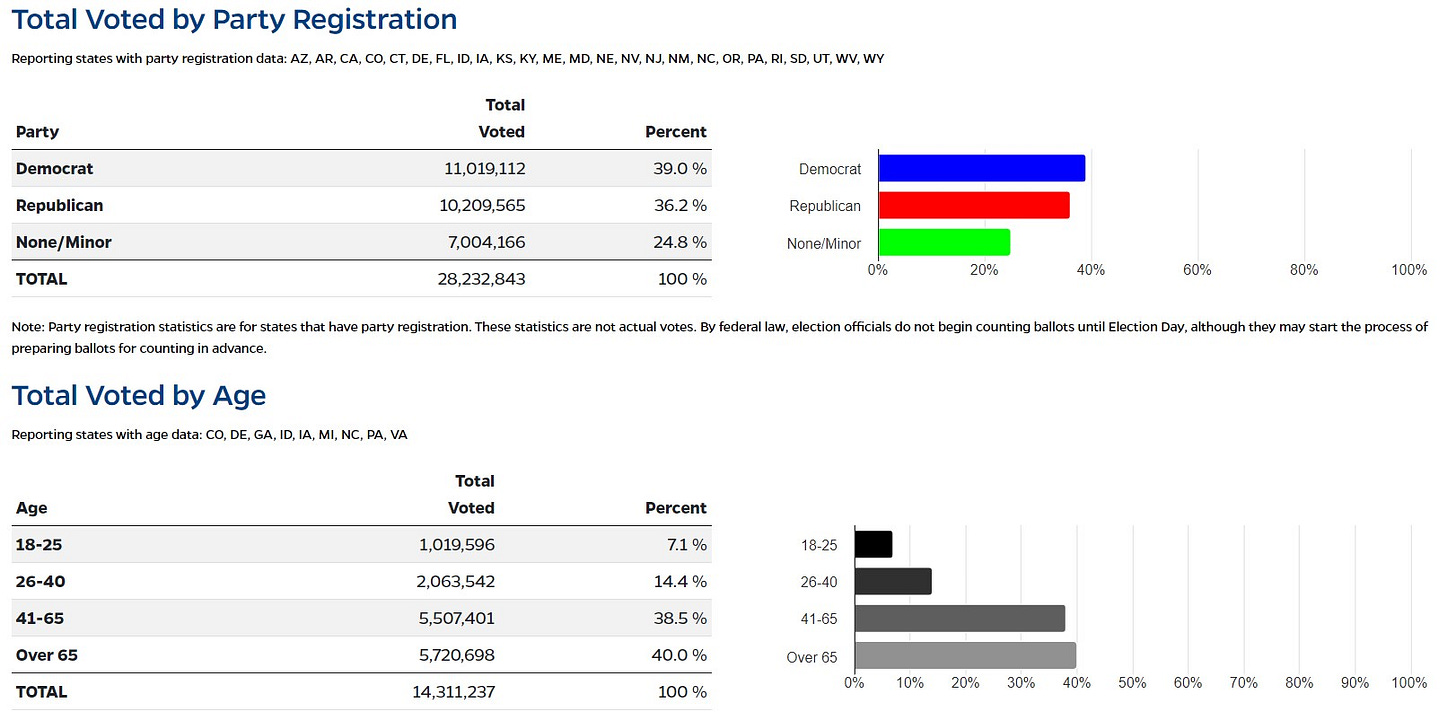
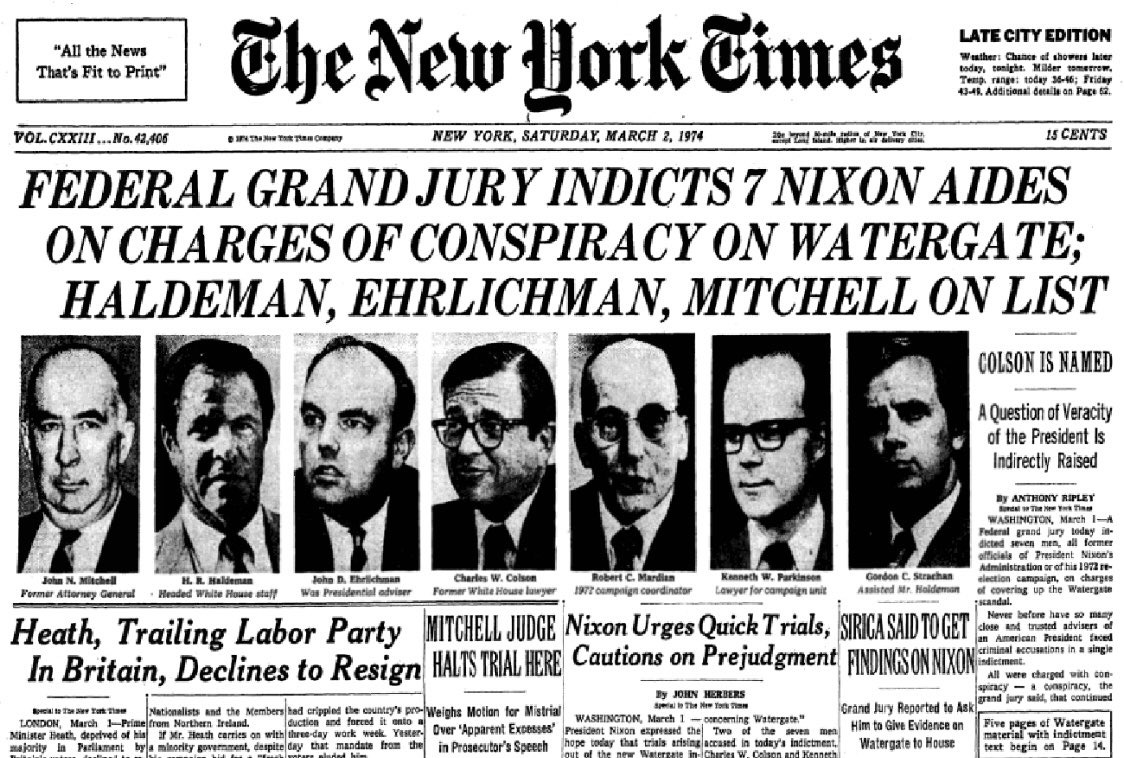
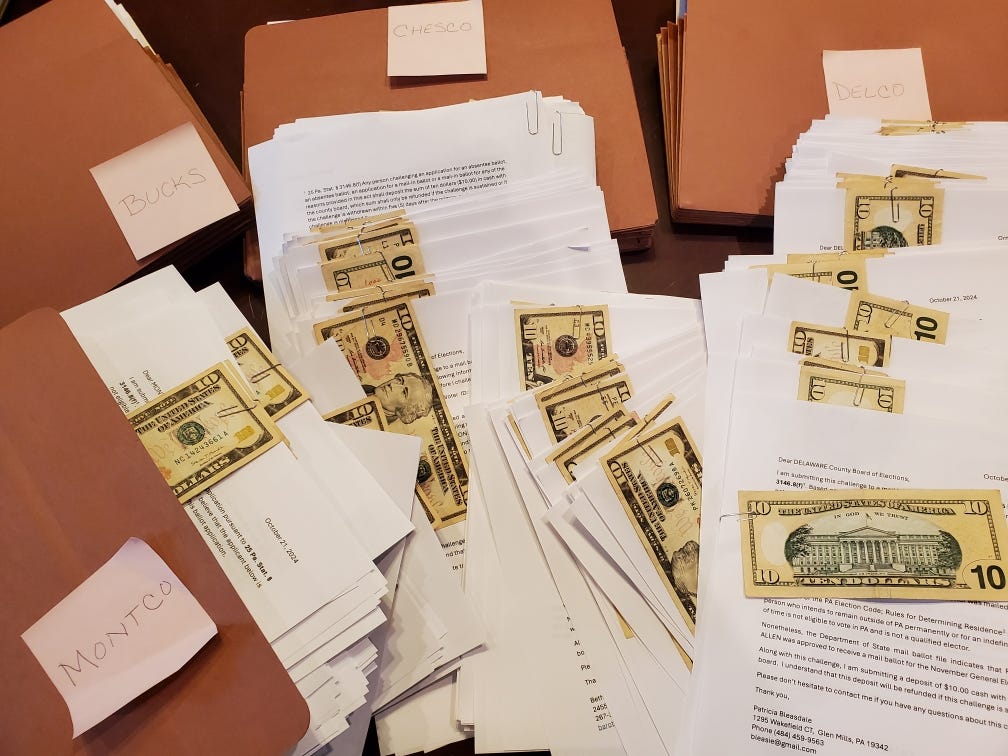
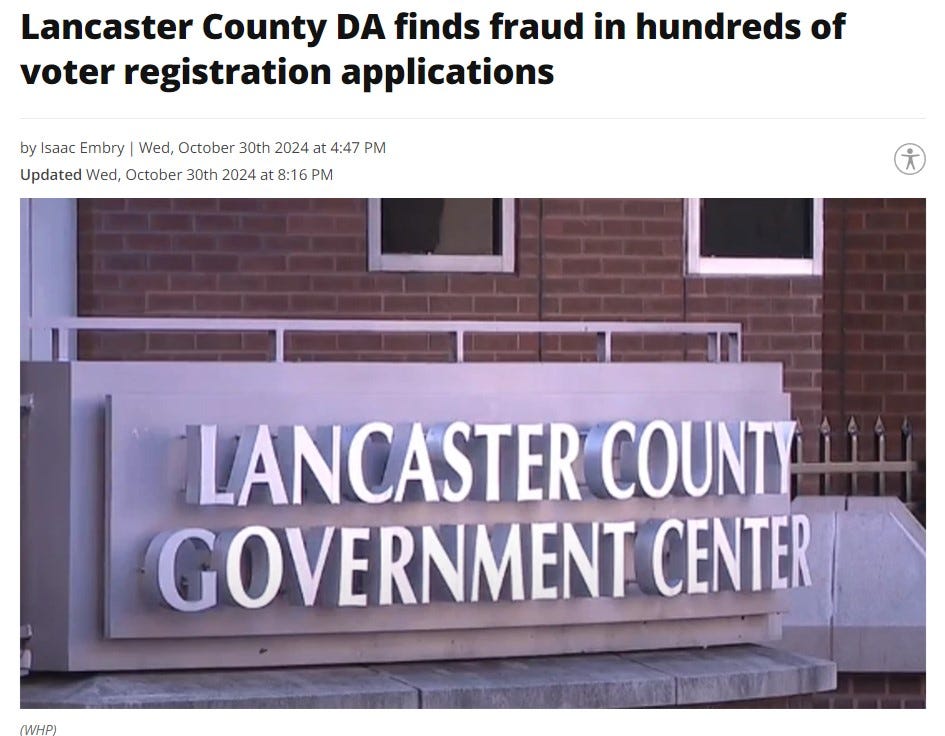

Great perspective! My hope is the republicans can pull out a big enough victory in PA causing the Dems to lose their $hit. This would lead to a repeal of Act 77 and go back to one day in person voting.
Praying that a GOP red wave will swamped the nation before it is too late for America